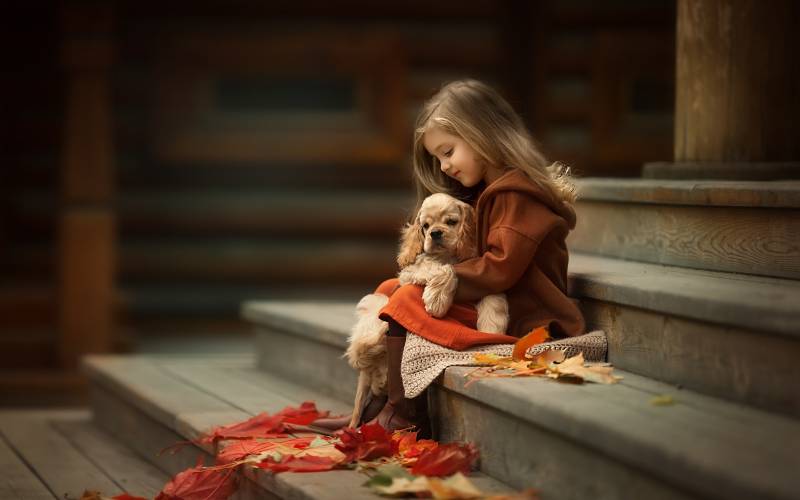patterdaleterriers.co.uk is a participant in the Amazon Services LLC Associates Program and other affiliate advertising programs designed to provide a means for us to earn fees by linking to Amazon.co.uk and affiliated sites. Affiliate links may be used on this page and in patterdaleterriers.co.uk articles, but they do not impact on the price that you pay and they do help me to get this information to you for free. Read my privacy policy for more information regarding affiliates.
Puppies are great for kids to grow up with. Puppies and Children DO mix, you just need to be aware of certain issues and train both the dog and the child to interact positively! When you bring that puppy home, everyone in the family is just so excited to meet him, but preparation is vital.
Initial Preparation
Children should be prepared and told about the new puppies arrival. They should be given the opportunity to ask questions about anything they are uncertain of concerning the puppy. They should be told exactly how to treat the new puppy so it won’t feel scared or frightened and try to bite.
It’s a nice idea to read a book about puppies and puppy care to the child. Show them how to pick up the puppy without hurting it. You may need to set some ground rules concerning how much the child can handle the pup.
Children should know that they must never hit or hurt the puppy. Tell them how it may retaliate and become aggressive. Explain that they must be careful not to step on him. they need to know not to grab his tail or pinch his ears.
The First Meeting – Puppy and Child
Try not to stress at the first meeting – puppies are playful and their teeth are very small and unlikely to do any damage. As long as the initial meeting between puppy and child is supervised, there isn’t much that can go wrong! If you are stressed this will reflect on the puppy and/or child and puppies can sense anxiety.
Choose a quiet and comfortable place such as the living room. Let the puppy come to the child of their own accord and give the child a treat to reward the puppy with when it is displaying calm and good behaviour. This will start to develop a positive bond between the child and pup.
How much Responsibility should the Child Have?
It’s a good idea to allow the child to take a part in feeding and walking the puppy. It gives them a sense of responsibility and develops a loving relationship. However, don’t let young children hold the dogs lead on their own. Also, don’t let the child have full responsibility over the dog. Children can help with feeding and playing, but an adult should always oversee the process. Teach your children to love and care for the puppy so that it will grow into a lovable affectionate dog.
Things to Avoid
Under no circumstances should the child play tug-of-war with the puppy. This is a dominance game to the puppy and even if the child wins, the puppy thinks it is alright to play rough in the future. Also children should not bark or growl at the dog at this can frighten the puppy as well.
Remember that no matter how good you think a dog or puppy is, never leave a dog or puppy alone with a child unattended. No matter how well you know that dog, leaving dogs and kids alone can be very dangerous.
When children are taught about how to look after a puppy and involved in the process of caring for it, there are positive benefits for both the dog and the child. Many children who grow up with dogs have a caring and responsible nature. Enjoy your new puppy – a loving and valued member of the family!
If you enjoyed this article on puppies and children you might also like to read:

